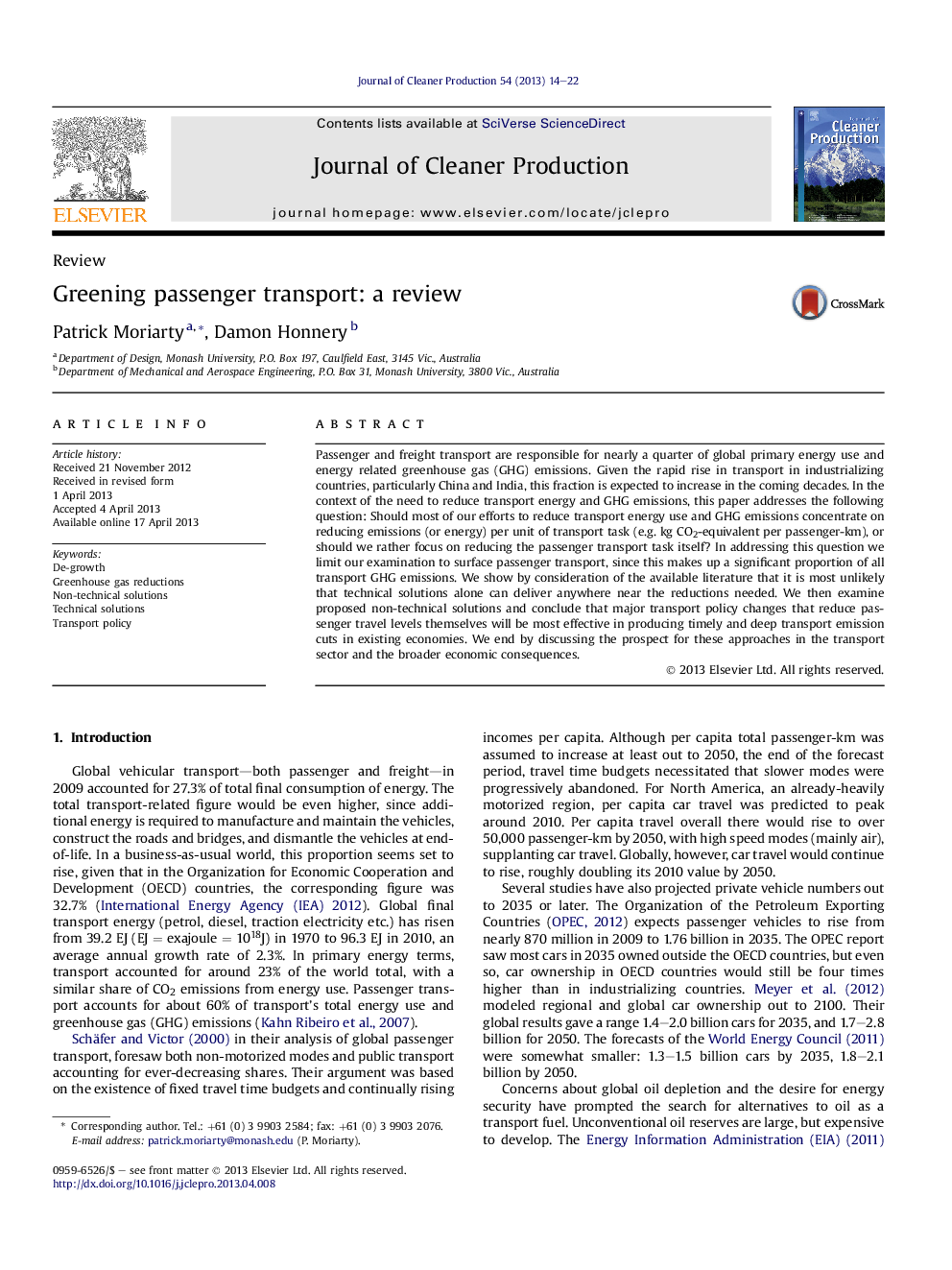| Article ID | Journal | Published Year | Pages | File Type |
|---|---|---|---|---|
| 1745278 | Journal of Cleaner Production | 2013 | 9 Pages |
•Technical solutions will not deliver needed transport energy reductions.•Travel reduction through acceptable land use changes are too small and slow.•De-growth might be necessary in OECD countries to achieve reductions.•Changes in transport behavior will be necessary.
Passenger and freight transport are responsible for nearly a quarter of global primary energy use and energy related greenhouse gas (GHG) emissions. Given the rapid rise in transport in industrializing countries, particularly China and India, this fraction is expected to increase in the coming decades. In the context of the need to reduce transport energy and GHG emissions, this paper addresses the following question: Should most of our efforts to reduce transport energy use and GHG emissions concentrate on reducing emissions (or energy) per unit of transport task (e.g. kg CO2-equivalent per passenger-km), or should we rather focus on reducing the passenger transport task itself? In addressing this question we limit our examination to surface passenger transport, since this makes up a significant proportion of all transport GHG emissions. We show by consideration of the available literature that it is most unlikely that technical solutions alone can deliver anywhere near the reductions needed. We then examine proposed non-technical solutions and conclude that major transport policy changes that reduce passenger travel levels themselves will be most effective in producing timely and deep transport emission cuts in existing economies. We end by discussing the prospect for these approaches in the transport sector and the broader economic consequences.
